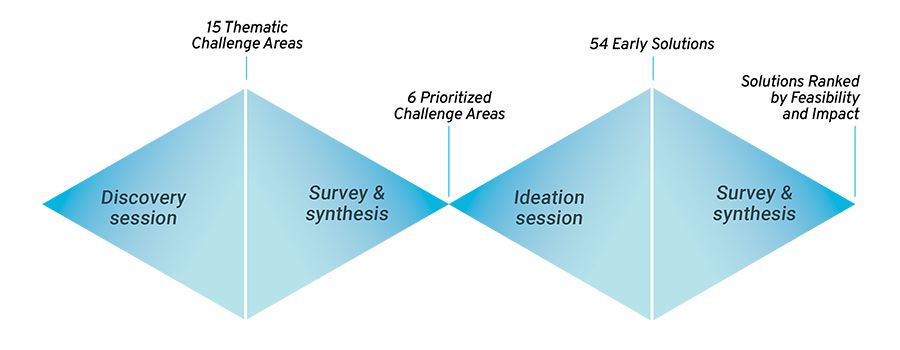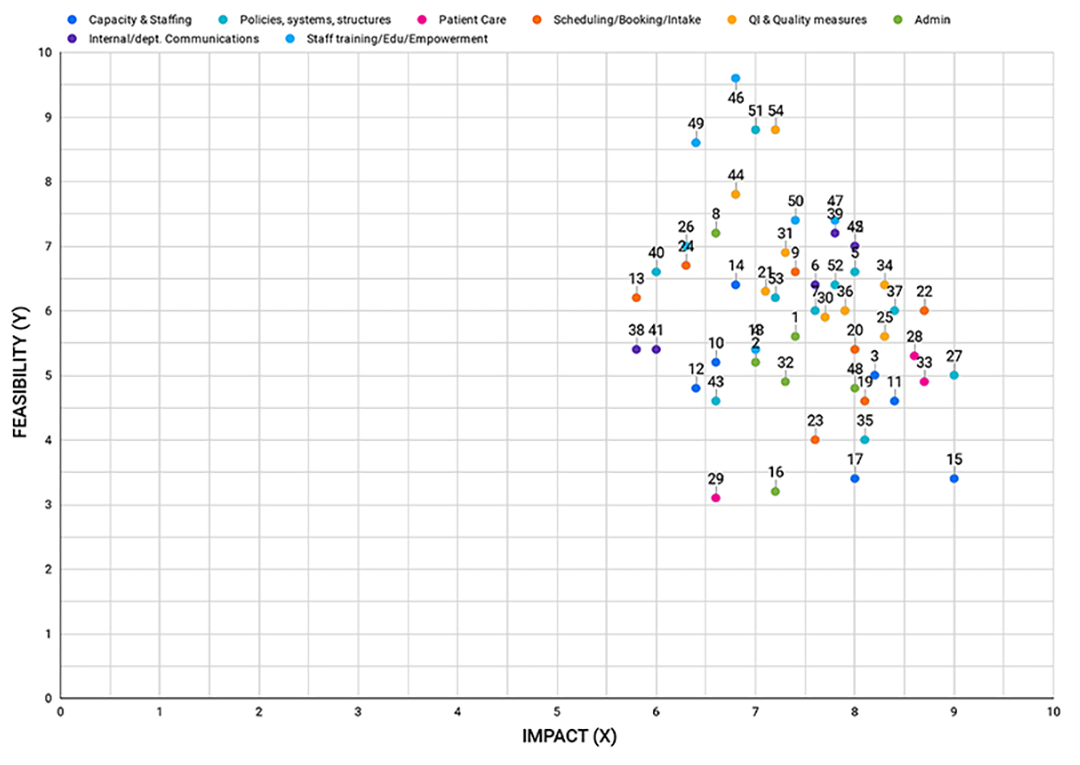The Challenge
With concerns around provider burnout and well-being, the Pediatrics Department came to us with the question, “How can we promote thriving in the Department of Pediatrics using lessons from Covid-19 and beyond?”
The Solution
We hosted WeSolve co-design engagements for the Pediatrics Department focused on discovering departmental challenges that kept providers and staff from ‘thriving’ and then captured early solutions. We provided the Pediatrics leadership a blueprint of possible paths forward.
Project Partners
Massachusetts General Hospital for Children (MGHfC), with support from the Mass General Physicians Organization (MGPO)
Services
Design Research, Co-Design Workshops
Year
2020
Special Thanks To—
Shannon Scott-Vernaglia, MD
Defining the Challenge
Two years into the Covid-19 pandemic and the Mass General for Children had experienced overwhelming change in their department. The pandemic introduced new and beneficial ways of working, but it also led to high rates of burnout for pediatric providers. Because of this, the Pediatrics department came to our Springboard team with the question, “How can we promote thriving in the Department of Pediatrics using lessons from Covid-19 and beyond?”
In the midst of a leadership search to find their next Chief, they sought out a strategic plan that prioritized early solutions which could serve as a roadmap for the future Chief and highlighted challenges providers and staff face as well as pragmatic solutions—big and small scale. We collaborated closely with an engaged and enthusiastic physician champion who framed our insights and got the relevant stakeholders together at the same time—no small task for a group of busy healthcare providers.

Through the course of two workshop sessions, the Pediatrics department worked to create divergent, then convergent ideas, in order to hone in on prioritized solutions while still understanding the greater context to their challenge.
“Our work with the Springboard Studio was terrific. I’ve found the final deliverable actionable; I love the interactive data and expect to play around with it a lot. I’m really excited to share with our leadership group and then I hope to informally invite [workshop] participants to come together to talk about if any of the ideas really call to them to start some working groups. I also feel like we have a beautiful welcome packet to give to faculty and staff joining our Department! Thank you so much! ”
Shannon Scott-Vernaglia, MD
Associate Chief for Clinical Faculty Development, Pediatrics

Ideas from the first workshop fit into 15 thematic areas, which were prioritized into the six that participants addressed in the second workshop.
Design Research & Co-Design
Our Springboard team began the design research process to better understand the Pediatrics landscape by holding in-depth interviews and shadowing clinicians. We conducted interviews with four people in the department—three physicians and one nurse manager. We conducted ethnographic research by spending time shadowing a Pediatric Primary Care Physician (PCP) and one Pediatric specialist to observe and better understand ‘a day in the life’. The insights from these sessions informed the design of the first co-design workshop.
Due to the busy schedules of our healthcare providers, we created this workshop to be efficient and convenient for participants, while optimizing time for their feedback and engagement. There were two workshop sessions—a Discovery session and an Ideation session—which were each 90 minutes long and scheduled around lunchtime. The sessions were held virtually, and were attended by about 20 participants from the Pediatrics Department. The Springboard team worked with our physician champion to identify a diverse group of clinicians and staff representing a variety of roles, specialties, and practice locations to attend both sessions.
The first “Discovery” session focused on creating a shared understanding of the challenges that Pediatric clinicians and staff face in their jobs that prevent them from “thriving.” The Springboard team facilitated conversations about the challenges related to tasks, tools, workflows, systems, environment, and culture that caused their jobs to be unduly frustrating. Following the Discovery session, the Springboard team collated the challenges we heard articulated by participants into 15 thematic areas, which were then prioritized by participants by survey. The second workshop, or “Ideation session,” focused on encouraging participants to brainstorm early solutions to the six prioritized challenges that prevent staff from “thriving.” The Springboard team created ‘how might we’ statements for the six up-voted challenges to serve as prompts for participants to respond to. Participants were asked to ideate individually and then share and build out ideas as a small group.
By the Numbers—
15
Thematic
challenge areas
6
Prioritized
challenge areas
54
Early
solutions
Impact
Across these workshops, participants produced a total of 54 early-stage ideas. We followed up the sessions with a survey asking participants to rate these ideas by possible impact on thriving (on a scale of 0-10; 0 = low impact; 10 = high impact;) and feasibility to implement (0 = low feasibility to implement; 10 = high feasibility to implement). The feasibility and impact scores for all 54 ideas were used to identify which ideas participants perceived to be the most impactful to thriving and which could be the most feasible to implement. Ideas rated high impact/high feasibility identified ‘quick wins’ for Department leadership, while ideas rated high impact/low feasibility identified areas for a longer-term strategy to address. Results were synthesized into a final report with interactive graphs of the data and was provided to the Pediatric department leadership as a blueprint of early insights into challenges and solutions that could be pursued to improve ‘thriving.’

A roadmap of numbered ideas plotted by impact x feasibility. Included within a larger packet, this provided Pediatric leadership a variety of paths forward for making departmental improvements.



